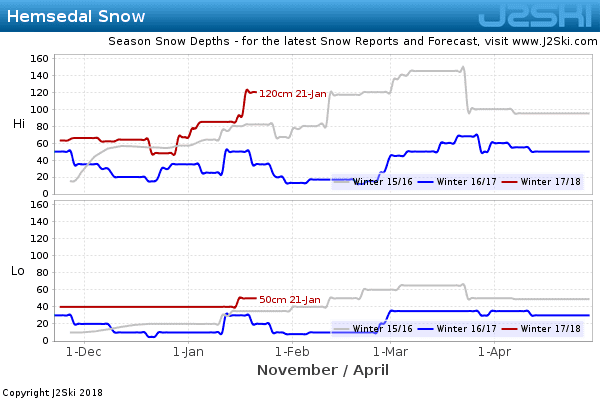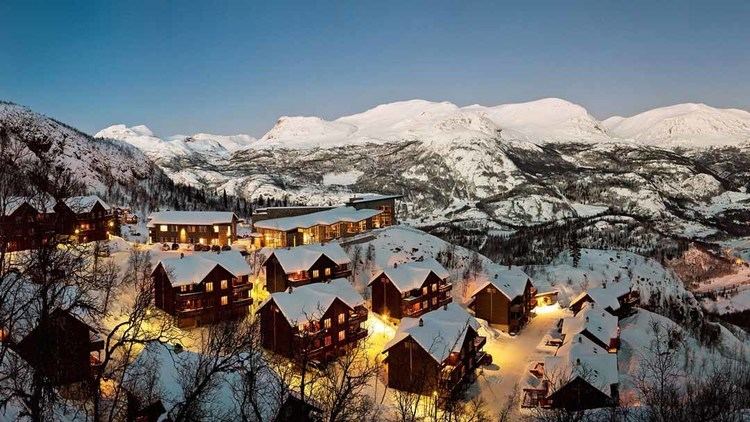Country Area 753 km2 Mayor Oddvar Grothe (Sp) | District | |
 | ||
Language spoken www.hemsedal.kommune.no | ||
Map of Hemsedal
Hemsedal is a municipality in Buskerud county, Norway. It is part of the traditional region of Hallingdal. The administrative centre of the municipality is the village of Trøym. Hemsedal lies on the Norwegian National Road 52 (Rv 52), the main road from Oslo to Bergen. Hemsedal is located 220 km (136.70 mi) northwest of Oslo and 273 km (169.63 mi) from Bergen.
Contents
- Map of Hemsedal
- Skiing alpine in hemsedal norway easter 2013 hd
- Hemsedal summer
- Name
- Coat of arms
- Early history
- Recent history
- Geography
- Economy
- Tourism
- Attractions
- Notable residents
- Sister cities
- References

Skiing alpine in hemsedal norway easter 2013 hd
Hemsedal summer
Name

The Old Norse form of the name was Hemsudalr. The second element is dalr, which means "valley" or "dale"; the first element is usually taken as the genitive case of the river name Hemsa (now Hemsil) of unknown derivation, although Sophus Bugge believed that it might derive from the Old Norse hemsa, hefnsa or hofn, meaning "going to pasture". The Norwegian word hems ("bed built in a small loft room") is named after the valley of Hemsedal.
Coat-of-arms
The coat-of-arms is from modern times. The arms were granted on 2 October 1992 and were designed by Stein Davidsen. The arms show a gold lynx head on a red background.
Early history
It is unclear how long there has been a settlement in Hemsedal, but the oldest houses are of very ancient origin. Charcoal found in many places in the valley testifies to iron smelting. The oldest charcoal that has been found has been dated to ca. 200–300 AD. Probably the first settlers made a living as hunters and gatherers; the area had a large population of wild reindeer in the past.
Hemsedal stave church (Hemsedal stavkyrkje) is believed to have been built between 1207 and 1224, and is first mentioned, as Ecclesia Aamsodal, in the accounts and diaries of the Papal nuncios sent to Scandinavia to collect tithes in 1282–1324. In 1327 it was also mentioned under the name Skodvinar Kirkja i Hemsudali; this refers to alternate names of the farm where it stood, Kyrkjebøen: Skodvin and Skadengård. The church was dismantled in 1882, when it was replaced by Hemsedal church (Hemsedal kyrkje) 1 kilometre (0.62 mi) away.
Hemsedal natives are known as hemsedøler. The local dialect is transitional between Eastern and Western Norwegian, with deep roots in Old Norse. The valley has traditionally had small and medium-sized farms that were widely scattered on the valley bottom on both sides of the river and along the slopes. Because of the high altitude, farming has concentrated for the most part on livestock and dairy, and use of summer shielings has been important for the farms, which could not find sufficient pasturage in the valley bottom. Most therefore had milking stations on the shielings.
In the 1647 cadastre there was only one farm in Hemsedal large enough to pay full taxes; there were 24 liable for half taxation and 15–16 assessed as disused. In addition, there were a number of enterprises that were not assessed tax. The estimated population was about 400 (the exact number is unknown). Until the mid-19th century, the population increased steadily. In 1845 there were 1,775 people in the village. However, the population declined again over the next 75 years, probably as a result of emigration to North America. In 1920 it had fallen to 1,358, before once more starting to increase. In 1897, Hemsedal was separated from the municipality of Gol to become a municipality of its own.
Recent history
Hemsedal's modern history can be said to begin early in the 20th century, when the first hotel in the village, the Skogstad Hotel, was completed in 1905. Before that, in the latter half of the 19th century, a road had been built through the village with the hope that it would become a major route to Western Norway. However, things changed dramatically with the opening of the Bergen Railway in 1909. Hemsedal once more became a detour, while upper Hallingdal took over as the main route.
In the 1920s, however, the first holiday cottages began to be built in the area. Outsiders bought huts in Hallingdal and moved them up into the mountains, at first to enjoy the fresh mountain air and hunting and fishing, not winter sports.
After the Second World War, new places to stay were established in the valley, such as Vangen Pensjonat (inn) at Tuv (1947) and Lykkjaheim Pensjonat (1953). A tourist agency was established in 1939 and in 1952 suggested building a ski lift in Hemsedal, but this did not happen until 1959, when Fossheim Pensjonat created the Tottenheisen, a 350-metre (1,150 ft) ski lift behind the inn at Ulsåk, serving the first piste in the village, Tottenløypa. However, this lift was torn down in 1961.
Hemsedal Skisenter (Ski Centre) opened at Holdeskaret in 1961, and a few years later, planning began for careful and controlled tourist development that has led to the nickname "Scandinavia's Alps". Over the five years beginning in 1980, a series of new businesses aimed at tourists were established, and the first chairlift, Olaheisen, opened in 1983. Tourism has continued to grow in economic significance for Hemsedal, which as of 2011 has approximately 500,000 guest nights over the winter season, divided between 6,500 available beds. More than half of visitors come from abroad. Hemsedal is now also popular in the summer season, due to good opportunities for fishing, hiking, climbing, cycling, golf and other activities and ample accommodations.
Geography
The municipality is bordered to the north by Vang and Vestre Slidre (both in Oppland county), to the east by Nord-Aurdal (in Oppland county) and Gol, to the south by Ål and Hol, and to the west by Lærdal (in Sogn og Fjordane county). Lakes in the region include Juklevatnet.
Economy
Hemsedal's economy is based on agriculture and tourism.
Tourism
One of the first tourists in Hemsedal was the Norwegian polar explorer Fritjof Nansen, who visited in 1898 and stayed at the Bjøberg Fjellstue. Today Hemsedal is a popular destination, with Hemsedal Ski Centre the main attraction.
About 70% of all visitors come in the winter season (December–May) and most of the remaining 30% in the summer months. The main countries of origin of tourists are Norway, Sweden, Denmark, Germany, Russia, the Netherlands and the UK.
Hemsedal is the second largest ski resort in Norway. The ski centres in Hemsedal and Grøndalen were bought in 2000 by the Swedish company Sälenstjärnen, which changed its name the following year to Skistar. Skistar also owns Trysil Ski Centre, Sälen and Åre, Vemedalen and Hammarbybacken in Sweden.
From the museum farm Øvre Løkji, there are several trails up into the mountains. Hemsedal's cross-country stadium is located at Gravset and is the starting point for a large network of trails to Lykkja and Gol, including 10 km (6.21 mi) of lighted trails.
Attractions
Notable residents
Sister cities
The following cities are twinned with Hemsedal:
